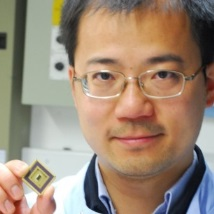Functional Materials Based Human-Machine Interactivities
A special issue of Materials (ISSN 1996-1944). This special issue belongs to the section "Smart Materials".
Deadline for manuscript submissions: closed (10 October 2022) | Viewed by 5172
Special Issue Editors
Interests: functional materials; wearable devices and systems; flexible electronics
Special Issues, Collections and Topics in MDPI journals
Interests: thin-film; bio-sensor development; printable electronics
Special Issue Information
Dear Colleagues,
With the fast development of material science and engineering, the field of human-machine interactivity (HMI) is experiencing a great change. Conventional mouse and keyboard based HMIs are being replaced by functional materials based flexible touch interfaces and wearable devices. HMIs once only depicted in science fictions are becoming a reality. Diverse novel human-machine interactive systems that based on functional materials such as piezoelectric, piezoresistive and pyroelectric, are continuously reported by researchers all around the world. Academia and industry are paying boosting attentions to this hot area, generating fruitful new and advanced prototypes and products for customers.
It is my pleasure to invite you all to submit research articles, review papers and short communications focused on functional materials based human-machine interactive applications, including but not limited to: materials fabrication process, material characterization, advanced and new measurement methods, smart skin for robotics, 2-dimensional and 3-dimensional touch interfaces, wearable and large area bio-sensors, etc
Prof. Dr. Shuo Gao
Prof. Dr. Hanbin Ma
Dr. Dai Jiang
Guest Editors
Manuscript Submission Information
Manuscripts should be submitted online at www.mdpi.com by registering and logging in to this website. Once you are registered, click here to go to the submission form. Manuscripts can be submitted until the deadline. All submissions that pass pre-check are peer-reviewed. Accepted papers will be published continuously in the journal (as soon as accepted) and will be listed together on the special issue website. Research articles, review articles as well as short communications are invited. For planned papers, a title and short abstract (about 250 words) can be sent to the Editorial Office for assessment.
Submitted manuscripts should not have been published previously, nor be under consideration for publication elsewhere (except conference proceedings papers). All manuscripts are thoroughly refereed through a single-blind peer-review process. A guide for authors and other relevant information for submission of manuscripts is available on the Instructions for Authors page. Materials is an international peer-reviewed open access semimonthly journal published by MDPI.
Please visit the Instructions for Authors page before submitting a manuscript. The Article Processing Charge (APC) for publication in this open access journal is 2600 CHF (Swiss Francs). Submitted papers should be well formatted and use good English. Authors may use MDPI's English editing service prior to publication or during author revisions.
Keywords
- functional materials
- human-machine interactivity
- wearable and flexible electronics
- touch interface
- smart skin
- multidimensional sensor
Benefits of Publishing in a Special Issue
- Ease of navigation: Grouping papers by topic helps scholars navigate broad scope journals more efficiently.
- Greater discoverability: Special Issues support the reach and impact of scientific research. Articles in Special Issues are more discoverable and cited more frequently.
- Expansion of research network: Special Issues facilitate connections among authors, fostering scientific collaborations.
- External promotion: Articles in Special Issues are often promoted through the journal's social media, increasing their visibility.
- Reprint: MDPI Books provides the opportunity to republish successful Special Issues in book format, both online and in print.
Further information on MDPI's Special Issue policies can be found here.








